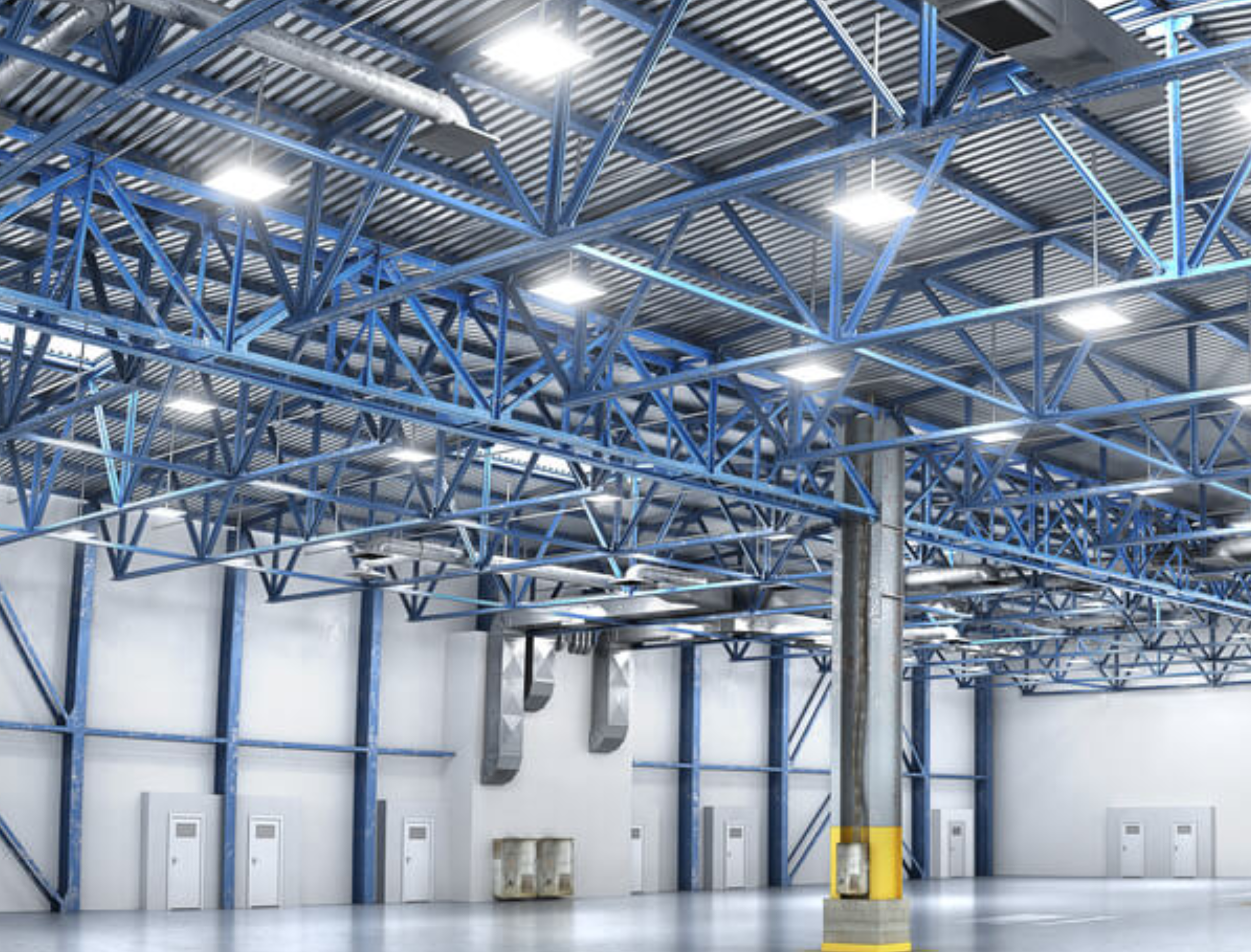Warehouse Lighting: What You Need to Know

By Marc Menard
February 15th | 2 min read
The Essential Guide to Warehouse Lighting

Why prioritize warehouse lighting?
Research indicates that proper illumination significantly influences warehouse operations. Explore various lighting options and essential considerations for your facility in this blog by Marc Menard below.
Warehouse Lighting: Enhancing Safety, Efficiency, and Productivity
When it comes to designing a warehouse, one aspect that often goes unnoticed is lighting. However, proper lighting is an indispensable component of a successful warehouse operation. Warehouses, with their unique characteristics such as high ceilings, limited windows, and extensive floor areas, require tailored lighting solutions to ensure optimal functionality.
Marc, our resident expert, sheds light on the critical considerations and benefits of implementing the right warehouse lighting solutions.
The Impact of Proper Warehouse Lighting
The impact of appropriate warehouse lighting extends beyond just “lighting”; it significantly enhances several aspects of the warehouse environment:
- Safety and Efficiency | Proper lighting significantly influences warehouse operations. It is essential for ensuring safety, efficiency, and productivity. Adequate illumination prevents accidents and facilitates smooth workflow. It can also lead to improved energy usage and reduced operational costs.
- Employee Well-being | You can directly enhance the overall well-being of employees with well-designed lighting systems. Studies show that improved lighting enhances working conditions and can reduce long-term work fatigue.
- Energy Usage and Maintenance Costs |Selecting and implementing the right lighting system can result in improved energy usage, lower maintenance costs, and an extended fixture life. This not only benefits the bottom line but also aligns with sustainability efforts.
Design Considerations
It’s crucial to consider the specific needs of the warehouse space when selecting and designing the lighting system. Before jumping into the lighting design process, it’s important to thoroughly assess the layout and specific requirements of your warehouse space, taking into account factors such as ceiling height, areas requiring focused lighting, and safety requirements.
- Strategically position the lights to ensure even light distribution throughout the space, aiming for uniform illumination while minimizing shadows and dark spots. The warehouse’s ceiling height and layout will be the main driver in influencing optimal placement. For example, I pattern lights are great for space with tall shelving units will need a type I distribution which is a very long and narrow light pattern. This ensures none of the light is lost or blocked by the top of the shelves. On the other hand, V pattern may be a good choice if your warehouse has a more open floor plan, a type V light distribution is more appropriate. This light pattern emits light in a widespread from all sides of the fixture in a circular or square distribution.
- Calculate the number of LED linear lights required, factoring in the desired brightness level and adhering to the manufacturer’s specifications. In order to achieve good coverage, aspects such as lumen output, wattage, and beam angle also need to be considered. More details on this below.
Other Considerations
When addressing warehouse lighting applications, operations teams must acknowledge the adaptability of industrial lighting across diverse manufacturing processes. Once the warehouse lighting needs are understood, attention can be directed towards other details mentioned below.
- Lighting Levels | A common best practice is to determine the appropriate lighting levels based on the type of work being done in the warehouse and the layout of the space. Factors such as ceiling height, wall and floor color, and space size all influence the required lighting levels. For detailed work, such as reading labels or identifying small parts, higher lighting levels (around 750 lux) are recommended, while general lighting typically requires around 500 lux.
- Color Temperatures | The color temperature of warehouse lighting plays a significant role in influencing the mood and productivity of employees. Opt for a warm white light ranging between 4000K and 5000K to promote alertness and productivity among employees. Avoid lighting that is too warm, as it can induce drowsiness and hinder visibility of labels and shelves.
- Maintenance and Regulatory Compliance | Maintaining a maintenance plan is vital for addressing any issues with the lighting system and ensuring long-term energy efficiency. Additionally, adherence to local regulations and industry standards, such as those set by OSHA, is imperative for safety and compliance.
- Control Options and Light Patterns | Implementing lighting controls, such as dimmers or motion sensors, and selecting the appropriate light distribution pattern based on the warehouse layout are key factors to consider for optimizing energy efficiency and visibility.
This may seem like a hyper nuanced effort, but effective operations truly lie in the details. Taking into account the above considerations and tailoring the lighting design to suit the unique needs of your warehouse, is an easy step towards creating a well-lit, safe, and visually appealing workspace that contributes to overall operational success.
If you’re interested in learning more about optimizing your warehouse design, reach out to us! Our team can guide you through the process, from initial design to installation, ensuring that your storage needs are met efficiently and effectively.
